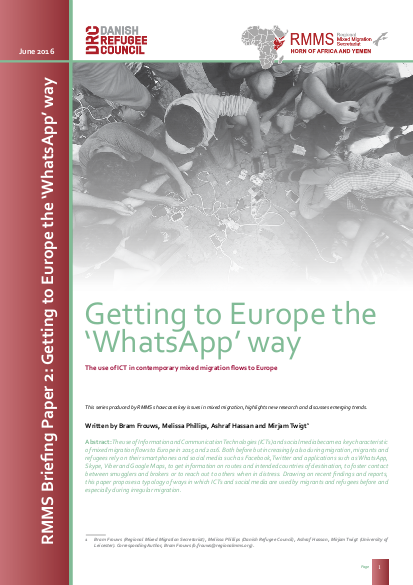
The widespread use of Information and Communication Technologies (ICTs) and social media during irregular migration journeys is increasingly understood as a key means through which migrants and refugees make plans prior to departing and obtain information en route. It is already known that smartphones are vitally important for migrants and refugees during irregular migration.
Both before but increasingly also during migration, migrants and refugees rely on social media such as: Facebook, Twitter and applications such as WhatsApp, Skype, Viber and Google Maps, to find out about routes and border closures, avoid police or detection by border guards, nd reliable smugglers and follow the news on government responses to the influx of refugees and migrants into Europe. By sharing information on social media and using Google Maps to navigate, smartphones provide migrants and refugees with information on where to go next. This paper focuses on the use of ICTs and social media in the migration trajectories of migrants and refugees heading for Europe, coming from the Middle East and from the Horn of Africa (particularly Somalia). While many studies have been conducted on the role of ICTs and social media after migration – related to migrant integration in host countries, to maintaining family relations, sustaining cultural identities and in supporting a family from abroad – the focus of this paper is on the use of social media before and especially during migration. This paper proposes a typology of different ways in which ICTs are used by migrants and refugees before, and particularly during, irregular migration. Throughout the paper, examples and screenshots are presented of the actual use of social media by migrants and refugees. These examples are based on internet searches conducted on Facebook, Twitter and YouTube in 2015 and 2016, using various expressions for irregular migration, such as ‘Tahriib’ in Somali. These searches were conducted by Arabic and Somali speaking researchers.
